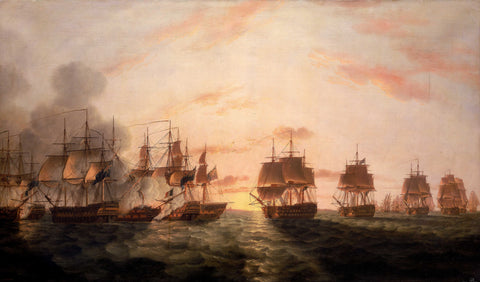- Australia ▾
- Topographic
▾
- Australia AUSTopo 250k (2024)
- Australia 50k Geoscience maps
- Australia 100k Geoscience maps
- Australia 250k Geoscience maps
- Australia 1.1m Geoscience maps
- New Zealand 50k maps
- New Zealand 250k maps
- New South Wales 25k maps
- New South Wales 50k maps
- New South Wales 100k maps
- Queensland 10k maps
- Queensland 25k maps
- Queensland 50k maps
- Queensland 100k maps
- Compasses
- Software
- GPS Systems
- Orienteering
- International ▾
- Wall Maps
▾
- World
- Australia & New Zealand
- Countries, Continents & Regions
- Historical
- Vintage National Geographic
- Australian Capital Territory
- New South Wales
- Northern Territory
- Queensland
- South Australia
- Tasmania
- Victoria
- Western Australia
- Celestial
- Children's
- Mining & Resources
- Wine Maps
- Healthcare
- Postcode Maps
- Electoral Maps
- Nautical ▾
- Flags
▾
- Australian Flag Sets & Banners
- Flag Bunting
- Handwavers
- Australian National Flags
- Aboriginal Flags
- Torres Strait Islander Flags
- International Flags
- Flagpoles & Accessories
- Australian Capital Territory Flags
- New South Wales Flags
- Northern Territory Flags
- Queensland Flags
- South Australia Flags
- Tasmania Flags
- Victoria Flags
- Western Australia Flags
- Gifts ▾
- Globes ▾
Dear valued customer. Please note that our checkout is not supported by old browsers. Please use a recent browser to access all checkout capabilities
The Battle of the Nile by Nicholas Pocock
$69.95
or make 4 interest-free payments of
$17.49 AUD
fortnightly with
![]() More info
More info
The Battle of the Nile, 1 August 1798. The painting shows the start of the action, at about 6.30 pm, looking north-west across Aboukir Bay, at sunset, from an elevated viewpoint to the south of the bay. Nelson's fleet, led by Captain Foley's 'Goliath', 74 guns, is shown in the process of doubling the head of the anchored French line, with the Aboukir fort beyond. The attack on the French centre is from seaward but the British ship 'Zealous', 74 guns, can be seen rounding the bows of the French 'Gueerier', 74 guns, at the head of the French line, to lead an attack on the enemy van division from the landward side. In the right foreground is the rearmost of the anchored French ships of the line, the 'Timoleon', 74 guns, in port-quarter view. Ahead of her, stretch the rest of the French fleet into the background in the centre of the picture. The names ahead of the 'Timoleon' are 'Généreux', 74 guns, 'Guillaume Tell', 80 guns, 'Mercure', 74 guns, 'Heureux', 74 guns, 'Tonnant', 80 guns, 'L'Orient', 120 guns (Brueys's flagship), 'Franklin', 80 guns, 'Peuple Souveraan', 74 guns, 'Aquilon', 74 guns, 'Spartiate', 74 guns, 'Conquerant', 74 guns, and 'Guerrier', 74 guns. Across the right background, the British fleet is sailing into position from right to left and the 'Goliath' has just rounded the head of the French line.
In the left foreground both the turbaned figures holding staffs and gesturing towards the action in the bay, and the carefully positioned palm trees, evoke the sense of place. Offshore in the centre is the French frigate 'Justice', 40 guns, anchored in port-quarter view, and ahead of her the 'Diane', 40 guns. Two more anchored stern-on and further off and to the left are the 'Artemise', 40 guns, and the 'Serieuse', 36 guns. In the left background, Aboukir Island is shown with guns firing from the French fort and the gunboats on the left. By the time the battle was at its height, night had fallen
Many of Nicholas Pocock's preparatory sketches for the Battle of the Nile survive, and the artist places considerable importance on accuracy, referring to his annotated drawings and sketch plans in producing his oil paintings. Pocock was born and brought up in Bristol, went to sea at 17, and rose to command several merchant ships. Although he only took up painting as a profession in his early forties, he became extremely successful, receiving commissions from naval commanders anxious to have accurate portrayals of actions and ships. By the age of 80, Pocock had recorded nearly forty years of maritime history, demonstrating a meticulous understanding of shipping and rigging with close attention to detail. The painting is signed and dated 'N Pocock 1808'.
The print can be printed on heavyweight 160 gsm paper or laminated. The paper version is perfect for framing under glass, and the laminated version is exceptionally hard-wearing, as we use a true encapsulation of two pieces of 80-micron gloss laminate.
Alternatively, we can supply this print on 395 gsm HP Professional Matte Canvas using pigment-based inks, making it highly durable and fade-resistant. The exceptional clarity of the printing makes this a stunning addition to any room, and its high quality means that it will provide years of enjoyment.
The easiest way to hang your canvas print is with wooden hang rollers attached to the top and bottom. The top roller has a hanging cord, so you only have to put a hook on the wall. The hang rails come lacquered in a natural timber colour.
Note: Please allow ten working days to deliver hang-railed prints, as our framer must attach them.
If you would like this print in a different size, please call or email us; we can help.
Painted: 1808
Size: 841 mm (w) x 579 mm (h)







